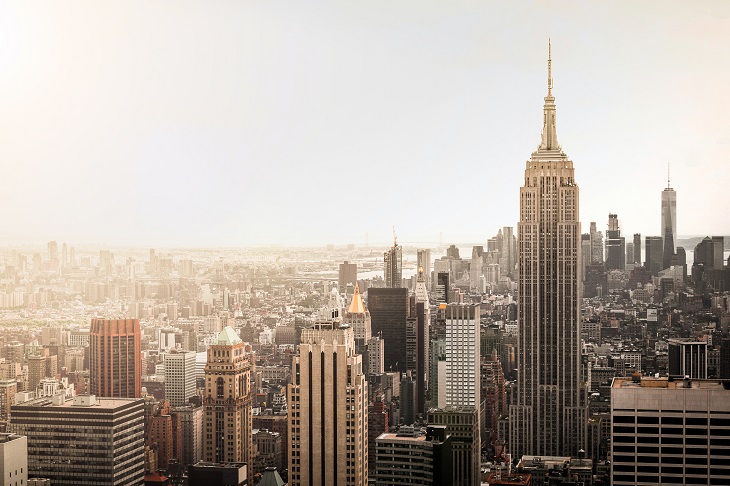In recent years, New York has taken significant strides in embracing the therapeutic benefits of medical marijuana. The state has established a streamlined application process, making it accessible for individuals seeking relief from various medical conditions. Today we’re here to walk you through the New York medical marijuana application process, the steps to obtain a prescription, qualifying conditions, card requirements, possession limits, and how to locate dispensaries nearby.
New York Medical Marijuana Application Process
The first step in accessing medical marijuana in New York is to complete the application process. New York has a tightly regulated program, and only certified healthcare providers can recommend MMJ. Patients must be New York residents with a qualifying medical condition to be eligible (more on these below).
The application process involves the following steps:
- Find a Registered Practitioner: Start by finding a registered healthcare provider who is authorized to recommend medical marijuana. Not all doctors are certified to do so, so it’s crucial to locate one who is part of the state’s Medical Marijuana Program.
- Schedule an Appointment: Once you’ve identified a registered practitioner, schedule an appointment. During the consultation, you’ll discuss your medical history and current conditions to determine if medical marijuana is a suitable treatment option.
- Get Certified: If the healthcare provider deems MMJ appropriate for your condition, they will issue a certification. This certification is necessary for the next steps in the application process.
- Purchase Your MMJ: Take your physician certification, along with your government-issued photo ID, to a New York MMJ dispensary to purchase your medical cannabis!
Qualifying Conditions for Medical Marijuana in NY
New York’s Medical Marijuana Program is designed to help individuals suffering from specific debilitating or life-threatening conditions. Unlike other states, New York doesn’t have a restricted list of conditions that render individuals eligible for medical marijuana use – any condition that your medical practitioner deems appropriate for MMJ treatment is a qualifying condition.
Some of the most common qualifying conditions for medical marijuana in NY include:
- Cancer
- HIV/AIDS
- Amyotrophic Lateral Sclerosis (ALS)
- Parkinson’s Disease
- Multiple Sclerosis
- Inflammatory Bowel Disease
- Neuropathy
- Huntington’s Disease
- Post-Traumatic Stress Disorder (PTSD)
- Chronic Pain
New York Medical Marijuana Card Requirements
To obtain a medical marijuana card in New York, certain requirements must be met. These include:
- Residency: You must be a resident of New York to qualify for the state’s Medical Marijuana Program.
- Certification from a Registered Practitioner: A certified healthcare provider must issue a written certification stating that you have a qualifying medical condition.
- Proof of Identity: Provide proof of identity, such as a valid New York driver’s license or identification card.

Image by Aaron Burson on Unsplash
Possession Limits for Medical Marijuana Patients in NY
New York has established possession limits for medical marijuana patients to ensure responsible use and compliance with state regulations. Adults aged 21 and above may possess up to three ounces of cannabis and up to 24 grams of concentrated cannabis for personal use.
It’s important for patients to be aware of and adhere to these limits to avoid legal complications and ensure the responsible use of medical marijuana.
New York Medical Marijuana Dispensaries Near Me
Once you have obtained your medical marijuana card, the next step is to locate dispensaries near you. The New York State Department of Health provides a list of registered dispensaries on its website, allowing patients to find the most convenient location.
- Visit the Department of Health Website: Go to the New York State Department of Health’s Medical Marijuana Program website.
- Locate Registered Dispensaries: Navigate to the section that lists registered dispensaries. You can filter the results based on your location.
- Check Dispensary Details: Review the details of each dispensary, including its address, operating hours, and contact information.
- Plan Your Visit: Once you’ve identified a nearby dispensary, plan your visit. Be sure to bring your medical marijuana card and your NY state-issued ID to the dispensary with you.
How to Get a Medical Marijuana Prescription in New York: A Summary
Let’s review the steps you’ll need to take to get a medical marijuana prescription in New York!
- Research Registered Practitioners: Start by researching registered practitioners in your area. The New York State Department of Health provides a directory on its website, making it easy to find qualified professionals.
- Schedule an Appointment: Contact the selected healthcare provider to schedule an appointment. Ensure that they are willing to discuss medical marijuana as a treatment option.
- Consultation and Evaluation: During the appointment, discuss your medical history and current conditions with the healthcare provider. They will evaluate whether medical marijuana is a suitable treatment option for you.
- Receive Certification: If the healthcare provider determines that medical marijuana is appropriate, they will issue a certification.
- Purchase Your MMJ: Visit a licensed dispensary in New York with your physician’s certification and you’ll be able to purchase medical marijuana products to suit your needs!
***
With the right info, the process of navigating New York’s medical marijuana landscape becomes more manageable. From the application process and obtaining a prescription to understanding qualifying conditions, possession limits, and finding nearby dispensaries, this guide aims to empower individuals seeking relief through medical marijuana. As laws and regulations may change, it’s essential to stay informed – be sure to check for the latest updates from the New York State Department of Health.
Featured image by Colton Duke on Unsplash
